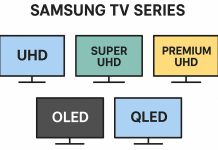The One Channel Map feature allows users to streamline the management of TV channels by consolidating all available signals into a single, easily accessible list. Instead of managing separate channel lists for different types of signals (such as digital, analog, or radio), users can edit and combine their favorite channels from any source into one unified feed. This makes it convenient for users who want a simplified and organized viewing experience.
How One Channel Map Works
With One Channel Map, you can select and list the channels you prefer from multiple broadcast sources, eliminating the need to switch between different signal types. Whether it’s digital television, analog signals, or even radio channels, this feature lets you create a custom channel list without the hassle of managing each signal individually.
However, it’s worth noting that radio channels are rarely used by most TV viewers, especially when cable television or streaming services are available. For many users, broadcast TV might also be unnecessary, particularly if cable or satellite services are already in place.
Why Most Users Don’t Use One Channel Map
Although this feature is available, it’s not widely utilized by the average consumer. The reason for this is simple: most people tend to rely on cable TV or streaming services, and managing broadcast signals or radio channels is not a priority. As a result, while One Channel Map offers a convenient way to organize and access all channels in one place, it remains underused in everyday home setups.
Overall, One Channel Map is a useful tool for those who want to combine various channels into one convenient list, but it’s primarily aimed at users who still rely on traditional broadcast signals.






